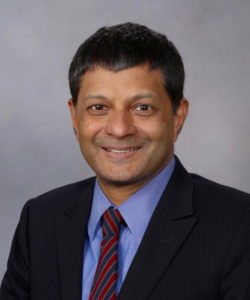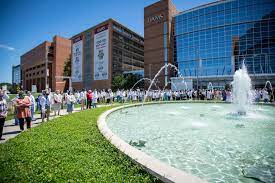“However, because most patients with myeloma face persistent relapses despite remaining on continuous maintenance therapy, they do not meet the criterion for “cure…””
Dear David- I was recently told on my first trip to a specialist at UAMS (University of Arkansas for Medical Sciences) that they are “curing” 30% of patients just like me.
While my own research on this claim has made me question that statement’s validity, as UAMS pushes the Total Therapy protocol strongly, that is exactly what he told me.
They are curing 30% of patients with my type of multiple myeloma. Is this true? Thanks, Sam
Dear Sam- Oncology has a different definition of the word cure from how you and I define the word cure.
UAMS is using the word “cure” to mean a functional cure. Please see the first article linked and excerpted below. Dr. Rajkumar is a MM specialist from the Mayo Clinic. He is an extremely knowledgeable MM specialist in my experience.
To be clear, if you are young (50’s), low-risk (no genetic abnormalities) and have no other co-morbidies (heart, kidney, etc. damage) UAMS can give you a double or tandem autologous stem cell transplant (ASCT) which is a LOT of chemotherapy and therefore a lot of toxicity and you may achieve a long first remission some of the time.
Remember that a 30% chance of a long remission is also a 70% chance of undergoing a lot of toxicity and NOT achieving a long remission.

The most important issue NOT discussed by either UAMS or by Dr. Rajkumar in the essay linked below, is the issue of short, long-term and late stage side effects. I think a long remission is an important achievement in MM yet I also think the patient needs to understand the risk of adverse events.
I live with about a dozen long-term and late stage side effects all resulting from my own ASCT back in 1995. As you can imagine, I feel strongly about this issue…
I will link a study below indicating the risks of serious side effects that can result from the extreme toxicity.
The bottom line is that you are in a very different situation than the one exhibited by the “average” MM patient- a 70 year old at stage II or III according to research.
Your prognosis is much longer than the “average” NDMM patient.
David Emerson
- MM Survivor
- MM Cancer Coach
- Director PeopleBeatingCancer
Recommended Reading-
PeopleBeatingCancer- Side Effects Program
A Conversation With S. Vincent Rajkumar, MD
“Functional cure” is used to describe patients who have experienced an excellent response to therapy but still have low levels of residual tumor cells in their bone marrow; and “cure fraction or relative survival” describes when the survival of a patient with myeloma is the same as a peer without myeloma. However, because most patients with myeloma face persistent relapses despite remaining on continuous maintenance therapy, they do not meet the criterion for “cure,” argues S. Vincent Rajkumar, MD…
Cure requires a fixed duration of therapy, and, in a subset of patients, the disease never comes back after stopping therapy. That happens in many cancers, and we know what it looks like. In some localized, resectable solid tumors, you remove the cancer, and patients are cured.
In Hodgkin lymphoma, diffuse large B-cell lymphoma, and childhood acute lymphoblastic leukemia, you give chemotherapy for a finite period of time, and a subset of patients are cured and live out a normal life without recurrence. That is the real definition of ‘cure,’ and I don’t want to change that definition…
Why haven’t we been able to cure myeloma, and why haven’t we been able to do what our lymphoma colleagues have done for their patients? It’s a question I ask myself all the time. And I come back with two problems. One is, perhaps we are not curing patients because we don’t have the right drugs or the right tools yet, and once we have the right drugs and tools, we can cure myeloma. Or two, is the problem that we do have the right tools, but we are not using them correctly…?
“Advances in transplantation techniques and supportive care strategies have resulted in a significant improvement in survival of those who have undergone treatment.
However, hematopoietic stem cell transplantation (HSCT) survivors are at risk of developing long-term complications, such as
- endocrinopathies,
- musculoskeletal disorders,
- cardiopulmonary compromise and
- subsequent malignancies.
These complications have a direct impact on the morbidity and mortality experienced by HSCT survivors.
Two-thirds of HSCT survivors develop at least one chronic health condition; while a fifth develop severe or life-threatening conditions.
HSCT patients who have survived for at least 5 years post-transplantation are at a fourfold to ninefold increased risk of late mortality for as long as 30 years from HSCT, producing an estimated 30% lower life expectancy compared with the general population…
Hematopoietic stem cell transplantation (HSCT) is an established curative option for a variety of hematological malignancies. Advances in transplantation techniques and supportive care strategies have resulted in a significant improvement in survival: 70–80% of those who survive the first 2 years following HSCT are expected to become long-term survivors [1–3].
However, cure or control of the underlying disease is not accompanied by full restoration of health.
HSCT survivors are at risk of developing long-term complications, such as endocrinopathies, musculoskeletal disorders, cardiopulmonary compromise and subsequent malignancies (summarized in ) [4–14]. These complications have a direct impact on the morbidity and mortality experienced by HSCT survivors.
The high burden of morbidity experienced by HSCT survivors forms the basis for standardized follow-up of HSCT survivors at high risk for post-HSCT complications. This article summarizes the magnitude of risk of key long-term complications experienced by HSCT survivors, identifying those at increased risk for these complications owing to host characteristics and therapeutic exposures…”




